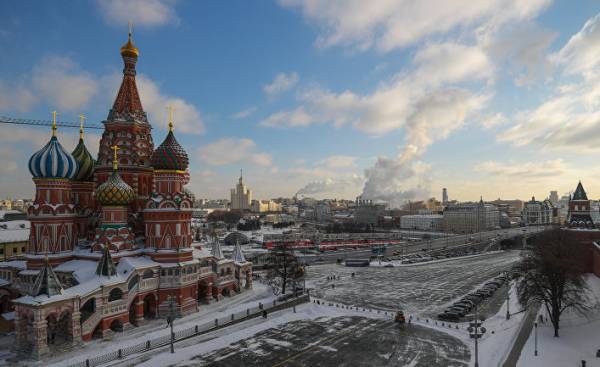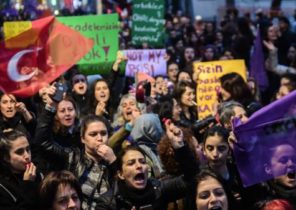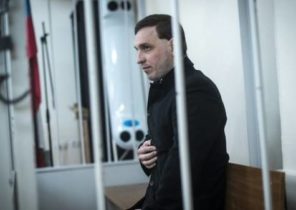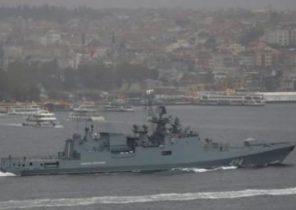
Whether the US and the West to worry about the increasing Russian power? The impression arises that necessary, considering how much the American media say and write about the Russian intervention in the American elections.
But in fact, Russian power, this thing is pretty fragile. Russia faces huge social and economic problems by masking them with his intervention in Western politics, the invasion of Ukraine and support of Bashar al-Assad in Syria. The aging of the population and the weakness of its economy — these are factors that go against the Russian military and global ambitions. Those internal problems that ignores the regime, will soon limit the ability of Putin to carry out foreign adventures and to show military power.
Simply put, Russia does not have funds to implement their great claims. Consider the following five factors.
1. The Russian economy is weak
First recall that the American economy is ten times bigger than Russia’s. Even in rich years, high oil prices, Russia could not compete with the economic power of the United States.
Those days are long gone. In the past decade, the export of hydrocarbons gave about 50% of the total government revenue. Because the last five years the price was around $ 100 per barrel, Russia experienced a period of economic boom. I must say that from 2000 to 2013 the Russian GDP increased by almost nine times. This is one of the reasons why Putin enjoys such strong support among the population.
But the recent collapse in world energy prices really hurt Russia, negating the economic gains of recent years and sending the economy down to recession. Moreover, the immediate prospects not very bright, as the economic growth in Russia in 2017 is expected to be minimal.
To prepare for the worst times, the Kremlin in the 2000s, he created a rainy day reserve Fund the proceeds from the sale of oil and gas. When prices fell, the government became a regular start to the Fund your hands. In 2014, this Russian stash was reduced from 87 to 16.18 billion. The country has one national welfare Fund, which is 73 billion dollars, but most of the funds from this Fund have already been distributed.
The economic downturn has already caused serious consequences. According to the world Bank 21.4 million Russians, or 14.6 percent of the population now live below the poverty line. And the number of people earning less than 10 dollars a day increased by eight percent. A recent study found that 41 percent of Russians do not have enough money for food and clothes. According to forecasts of Ministry of economic development until 2035 to raise the living standard of the population will not.
2. Russia’s demographic crisis
Russians give birth to enough children. The birth rate in the country is 1.7 children per woman, far below the rate of 2.1 necessary for population reproduction. Moreover, Russian men die too early. The average life expectancy is 64 years. This is less than in North Korea, and by as much as 15 years lower than in Germany, Sweden and Italy. This is caused by unusually high levels of alcoholism, tobacco Smoking, untreated cancer, suicide, tuberculosis, AIDS and violence.
In 2012, the world health organization concluded that 30 percent of all deaths in the country caused by alcohol. 12 million Russians regularly drink surrogate alcohol, such as medical alcohol, wash the Windows and the Cologne. Russia is suffering from the AIDS epidemic. In the third largest city in the country in Yekaterinburg every fiftieth resident infected with HIV. The number of murders in Russia is equal to 11.3 per 100,000, which is much more than the average for member countries of the Organization for economic cooperation and development (4,1). In Britain, the figure is 0.2.
As a result, by 2050 Russia’s population could shrink by 16 percent or 23 million people. This will lead to a reduction of labour resources by 25 percent. If it is less than workers, will increase the pension deficit, which today is 54 billion and threatened to bankrupt the state.
3. Russia is no longer able to buy off the troubled regions
Russia still spends $ 10 billion annually on subsidies problematic regions like Chechnya and the Crimea. Because the source of those subsidies dried up, in the relations between Moscow and the regions, tensions that threaten to escalate into conflict in the North Caucasus.
Moreover, the Russian regions vary significantly in the size of its economy. Only 14 of the 83 regions of the country contribute to the Federal budget more than they receive in the form of grants. The future direction of cash in remote areas and in regions with non-Russian population can cause a surge of discontent among the population and to deprive Moscow of the opportunity to support the separatist enclaves in Ukraine, Georgia and Moldova.
4. Russia will have to cut military spending
The state of the Russian economy largely determines its military spending. In 2017 Russia will spend 30 percent of its budget on the army and security services, and only 2.3% on health. Due to the economic stagnation in 2016, defense spending in Russia fell for the first time since 1990-ies. According to forecasts, by 2020 Russia will spend on the army a total of $ 41 billion. That’s less than the military budget of France, where the population is only 46 percent of Russia’s. In addition, the high cost of in Syria and Ukraine may force Moscow ahead of time withdraw or to bankrupt the regime. One Russian newspaper recently reported that just for the military contractors in Syria, the state spends $ 1.8 billion a year.
Now compare this 41 billion from 892 in billions of dollars of military spending for NATO in 2015. The difference is big, and it certainly will increase. Russia is simply not able to beat United and well-funded the Alliance for war appropriations. She can’t even catch up to him.
Today, Putin can behave aggressively, because the Russian budget, the priority is guns, not butter. Putin’s regime is very effectively traded economic prosperity and social spending on military power. But to save such a deal for a long time he can’t.
Consider, for example, the Russian crisis in the health sector. Approximately 85 000 rural settlements generally have no medical infrastructure. Bloomberg recently conducted a study on the effectiveness of healthcare, and Russia took the last place, being behind 54 other developed economies. But the state next year plans to reduce health care costs by 33 percent, bringing it to a paltry $ 5.8 billion. The Ministry of health will receive less than two percent of the funding that it asked for the 2017-2025 years. Salaries of doctors in the poorest regions account for only 250 dollars per month and probably will continue to decline.
The situation is exacerbated by systemic corruption, which is detrimental to the health programs. For example, in 2015, the Fund of obligatory medical insurance just “lost” more than $ 500 million.
5. Chronic social problems ultimately will fundamentally change Russian policy
The Russians are known for their firmness and patience, but they are not robots. Putin’s popularity is explained not only by media manipulation and boastful jingoism, but the real economic achievements. As noted by Daniel Treisman (Daniel Treisman), even in authoritarian States, economic growth is tied to national approval.
The protests of the working population is growing stronger. According to the survey for 2017 32 percent of Russian citizens can take part in the protests, if they pass they are in the city. This is the highest rate since Putin came to power in 1999.
Russia is not the Stalinist dictatorship, but it is “managed democracy.” Long the economic downturn will change the mood in society. No matter how powerful and terrible it may seem, Russia today, the current situation can not last long. Stability in Russia and Putin’s regime are on shaky foundations, which have begun to appear cracks.
Joss of Mikis — graduate of the Harriman Institute at Columbia University, exploring issues of Russian politics and security.







